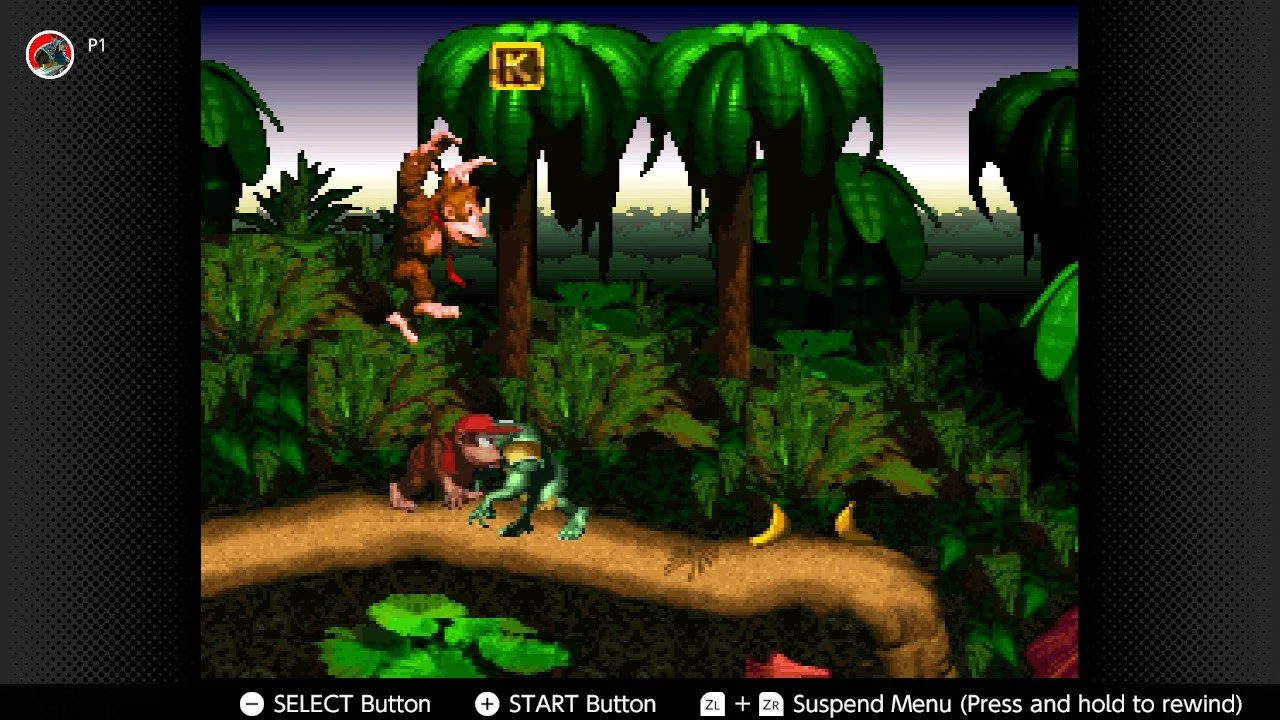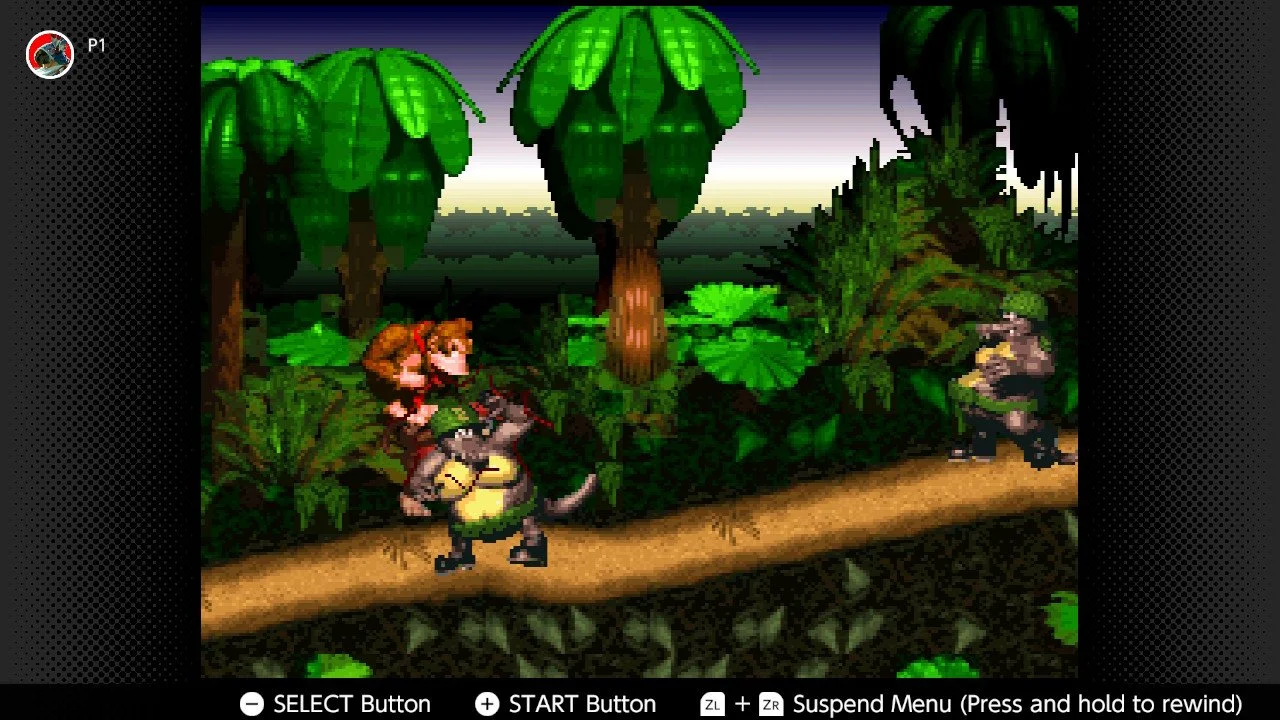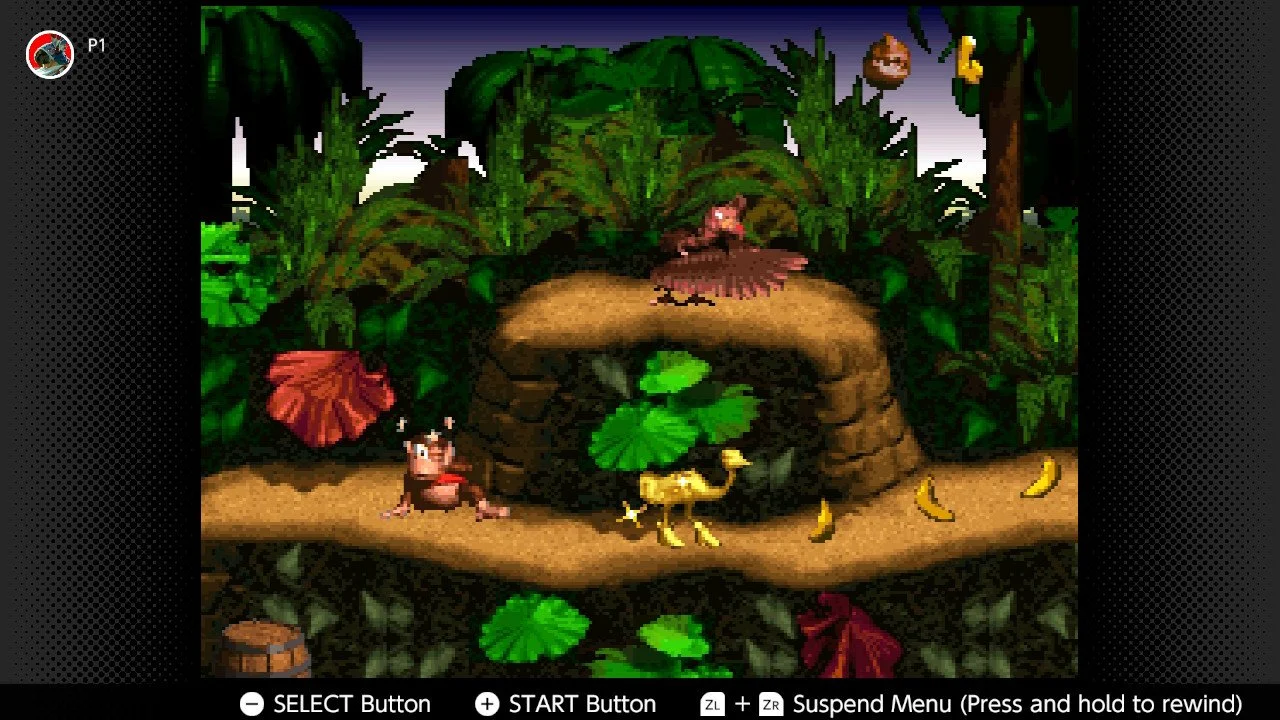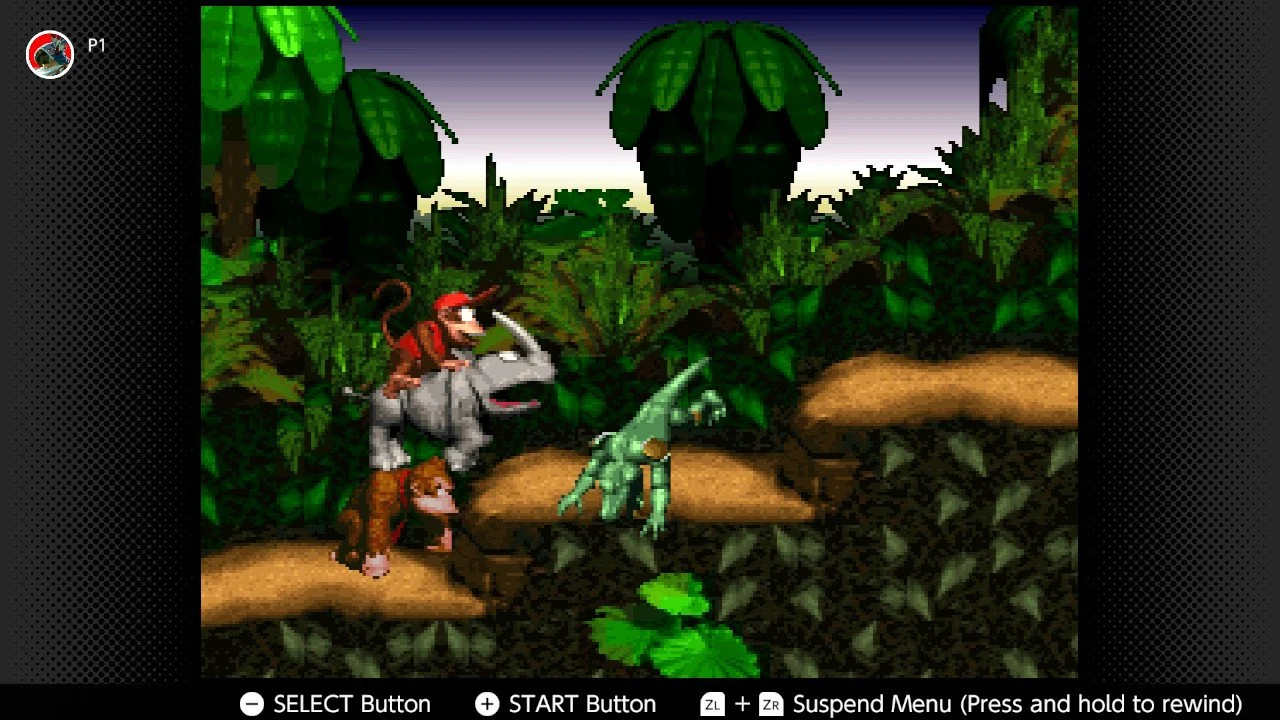Donkey Kong Country: Jungle Hijinx, Kreepy Kritters, & Raw Data
While I was writing about the number of Imps in Classic Doom’s first episode “Knee Deep in the Dead” I indulged myself by making a spreadsheet and a chart. This is, if I’m being honest, an impulse as close to my very being as breathing.
I’m not even kidding.
One of the jokes in the Library where I work is that “Jammer don't need an excuse to make a spreadsheet.” This is a joke the way some people joke about the number of pens I tend to keep in my front pocket or how they joke about me being useful because I’m over six feet tall and able to pick items off the top shelf. These jokes are, obviously, not really jokes, but good-spirited observations about my behavior to tease me and make me feel like I’m part of a team. And I’ll be honest, I don’t mind them a bit. I am tall and therefore skilled at picking things off of high shelves, I do regularly keep 6-7 pens in my front shirt pocket (without a pocket proctor(I like to live dangerously)) in case I need to write something down or draw, and I do keep somewhere around 10-12 Microsoft Excel spreadsheets going at work to keep track of the various stats that I have to record while working.
When I mentioned to my supervisor and a co-worker that I had started a Microsoft Word document to start a catalog of various maps and charts in the Local History room, I was met with poorly veiled shock, before they began to ask me if I was okay. When I asked them why they said they were just surprised that I hadn’t made a new spreadsheet.
I made some joke about totally not being a T-1000 posing as their coworker, but then considered it.
I probably should have made a spreadsheet.
Looking at raw data and then collating it into observable patterns is just second nature to my brain, so naturally as I’ve started writing about videogames, which are themselves just raw collections of digital information compiled into entertainment and/or educational software, it made sense to just start a new spreadsheet to look at different facets of videogames.
And thinking about how I approached DOOM and Imps, I figured I could just start a trend, or maybe even a series of essays that just try to look at raw data.
Hence the subtitle.
Looking at the first game to pick (or really second since the aforementioned DOOM article is the spiritual foundation of this new series(assuming this will be a series)) it seemed obvious immediately: Donkey Kong Country.
Cover art provided by Moby Games.
Apart from Legend of Zelda: A Link to the Past, there isn’t another videogame so fundamental to me in terms of my love of videogames, and I’ve probably, scratch that, almost certainly played well over 100 hours of the game. It’s also, looking at it analytically, a perfect place to collect raw data.
Donkey Kong Country was released by Nintendo for the Super Nintendo Entertainment System(SNES) in 1994. Developed by Rare, Ltd., the same company that would later develop Donkey Kong 64, Banjo Kazooie, and Goldeneye 007. Donkey Kong Country was unique for the fact that it was an intellectual property(IP) owned by Nintendo, but developed by a third party company. This wasn’t just unusual, this was bizarre due to Nintendo’s dragonesque behavior when it came to their IP. Donkey Kong Country follows the red tie wearing Donkey Kong, though in fact it actually follows Donky Kong Jr from the original arcade and NES titles of the same name. Donkey Kong awakes to discover his entire horde of bananas has been stolen by the evil King K. Rool who is, simply put, a chongus supreme.
Seriously dude is the OG fat villain of the Nintendo series, and he looks like a green bowling ball on toothpicks. He looks like Kermit the frog chugged helium while smoking methamphetamines. His circumference would make the equator question its life choices. Snorlax would tell this dude to cut down on the snacks. It looks like he swallowed Pac-Man and put on a crown to celebrate. The Fat Chocobo in Final Fantasy 7 has a photo of this dude on his phone to remind himself it could always get worse. King K. Rool is a gargantuan, glutinous tub of scales and he legit made me worry about his health the first time I rented Donkey Kong Country from my local Hastings.
I think I was writing something about data in videogames before this tangent, wasn’t I?
Yes, I was.
Actually, wait, I got one more.
He looks like he swallowed the whole damn falling boulder from the first Indiana Jones movie and now he’s trying to make it work.
Okay. I promise I’m done. Back to spreadsheets.
Donkey Kong Country is a platformer, meaning the game is about moving Donkey Kong and his shorter, baseball hat wearing companion Diddy Kong, from the start of one level to the end of it while jumping, walking, running, and dodging obstacles. There’s rope jumps the player will have to make. There’s barrel cannons that will shoot Donkey Kong across the level, sometimes into the paths of bees named Zingers. There’s gaps that have to be jumped across, often directly into the paths of enemies. And, on that note, there are various enemy non-playable characters(npcs) that have to be killed or passed by without making physical contact.
Just about every platform game that has ever, or will ever be made follows this structure in some form or fashion.
NPCs become really interesting to observe and track in platformer videogames because, depending on their number and their unique qualities, they inhibit movement across the space in unique and interesting ways that the player has to overcome.
My methodology for this essay was to go to the website mariowiki.com where there is an entire page dedicated to Donkey Kong Country and its levels. Similar to my essay about DOOM, I went to the individual levels page where writers have compiled specific numbers of enemy npcs the player will encounter in each level. I made a spreadsheet in Google Docs (I’ve only recently acquired a Microsoft license and will begin remaking my charts on that platform soon) and organized it according to the chapters of the games, and within in each chapter provided the title of each level. After that I compiled the names of the individual enemy NPCS, specifically their in-game names. I will note that the “Kritter” enemy, the anthropomorphic and bipedal crocodile enemies have several variations and, in the interest of saving time, I’ve compiled them all together as one type. I recognise some may disagree with this choice, but since they are ultimately the same NPC but coded with different colors I perceived listing them out individually would be too much effort, or, more accurately, I would be splitting hairs.
If my reader thinks this last action is sloppy or bad statistics, just @ me on Twitter.
The jokes on you though, I’m not even on Twitter.
One other important point is that each chapter typically contained a “water level.” These levels are unique in and of themselves, not simply because of the way the platformer adjusts its physics, but because the enemies Donkey Kong and Diddy encounter will not be found anywhere else in the chapter. As such I’ve decided to write about these levels in a later essay, so stay tuned for that.
Approaching this essay I thought it would be best to look at each of the “chapters” of Donkey Kong Country and compare all of the enemy NPC numbers level-by-level, but, that seemed like it might be too much information, or, maybe more fairly, too much for the reader who’s probably disappointed that I’m not writing about the level Mine Cart Madness.
I’m working on it
I promise!
So instead of tackling every level, I decided to just write about the first level of Donkey Kong Country, Jungle Hijinx, and see how NPC counts were designed.
With that said, let’s look at the data.
I like variety, so I’ll also provide a pie-chart below:
Charts speak for themselves; that’s why the words “data visualization” bring me a tremendous amount of satisfaction: concise and self explanatory. Still, this is an essay, so I’ll analyze this data.
After looking at this chart I was surprised, not just because I was 35 years old when I learned that the coral snakes in Donkey Kong country were named “Slippa” but because I had always assumed the little beavers named Gnawty would be the highest number of enemies in Donkey Kong Country. They were just always there, but, more accurately upon reflection they were just the first enemies I encountered in the game. Much like the Goombas in Super Mario Brothers, their visuals sealed into my brain as the defacto enemy npcs, when in fact the Kritters were far more frequent. Calculating it out there are a total of 57 Kritters in the Kongo Jungle alone, while there are only 4 Gnawtys(though technically the boss of the region is a giant Gwnaty, so I suppose it should actually be 5). When Donkey Kong leaps out of his front door and lands on the ground the first enemies the player will encounter are two of these beavers in a row that shuffle and waddle forward looking like possessed zombies.
It doesn’t take any effort to crush a gwnaty beaver (omg, I just got that), and I can have Donkey Kong roll forward which will also kill them instantly.
The simplicity of this enemy npc is important as a design because, again, Jungle Hijinx is the first level of Donkey Kong Country and thus is designed to introduce players to the mechanics they will need to master moving forward. It makes sense then that Kritters and Gwnaty’s are the majority of npcs that players will encounter. They don’t pose any real threat, and their position in the level is simply to create expectation.
The two npcs in Jungle Hijinx that actually challenge the player are Klumps and Neckys. The first is a massive bipedal lizard with an obvious paunch wearing an army helmet, and the latter is a vulture that sits atop a large platform and throws coconuts.
The player will encounter two klumps in quick succession after the initial encounter of Gwnawty’s and Kritters, and their size presents an important realization for first time players who haven’t been paying attention. I noted earlier that Donkey Kong is accompanied by his companion Diddy Kong, who is noticeably shorter and smaller compared to his tie-wearing companion. This at first isn’t significant since Diddy can run and jump like Donkey Kong can. In terms of controls the characters have the exact same skill set, and since this is the SNES videogame and skill trees aren’t even a glimmer in the motherboards of this console era, anyone can play as these characters. However, Klumps are the first reminder that size does matter.
Donkey Kong can defeat a Klump with one jump.
Diddy Kong can jump on Klump(quoting Dr. Seuss), but he’ll immediately be thrown back.
The first time this happens panic is surely the first response…or at least it is if you’re eight years old and living in the early 90s.
Tank npcs are a common structure of videogames, though they’re typically reserved for the realm of first person shooters(fps). Easy examples of Tanks would be Berserkers from Gears of War. This character is more-or-less a bullet sponge and typically has to be defeated either through a puzzle solving mechanic, or else setting it ablaze and then using smaller weapons. Tank npcs exist to challenge the player’s ability to adapt under pressure and are often employed alongside smaller enemies to overwhelm the player at first, but then eventually to encourage critical thinking.
Diddy can’t jump on Klump; he’s too small.
Diddy can however get underneath Klump; he can cartwheel and trip him up.
Diddy can roll-attack into Klump, killing him instantly, and thus the next lesson becomes clear: some enemies will require specific approaches. But this essay is about data, so what’s important is how the use of just two Klumps in quick succession reveals the educational design. Players are given two Klumps in a row, and then one single Klump near the end of the level as a way of preparing players for later levels when the platforming will become more challenging, and the placement of npcs within the level will only increase in difficulty.
Which leads me to the single Necky.
Stationary enemies in platformers typically operate to challenge the player’s footing, and Necky perfectly encapsulates this idea. The vulture sits on top of a pyramid-like series of platforms that holds rows of bananas and even an Ostrich icon, and as players approach it will duck its head behind its wing. After this animation a coconut will hop up from behind this curtain and will fall in the direction of Donkey and Diddy Kong. I note here that Necky is not invulnerable; the player can jump on top of this vulture and kill him thus removing the threat. The challenge is, like any good platformer, about approaching the enemy carefully and timing the jump at just the right moment.
Being a kid when I first played Donkey Kong Country (and a little boy to boot) I was impatient and would often just charge brazenly up the side of the hill and hop on Necky, his coconut slamming into Donkey Kong right as I had jumped.
Literally right as I jumped.
Literally, the exact second.
The exact flipping second.
This failure allows me a moment of reflection, as I consider the progression of my life, I realize most of my working knowledge of curse words was incubated by regularly dying in videogames.
The use of a single Necky is important however because, by this point in the level, players have progressed through the basic npcs, and then at least two tank npcs. The game has slowly built player confidence that it is ready to introduce a new challenge/lesson and Necky demonstrates that moving through space in levels will be challenging not solely due to enemies walking into Donkey Kong. The player will now have to navigate moving obstacles setting the stage for the character Zinger, flying bees, as well as Necky’s themselves which will become more frequently occurring.
Honestly speaking, looking at this data, I freaking love this element.
The use of a single Necky on top of the hill is a perfect design because it merges the actual challenge of moving obstacles, alongside the challenge of vertical space. Though Jungle Hijinx is predominantly a horizontal level, there is some vertical ascension in the later half of the level, and the rest of Donkey Kong Country will incorporate moving vertically as well as Horizontally. By placing a Necky on top of this hill, the designers created a practice space for moving up and down within levels while also showing players that, as they progress from here they will inevitably have to pay attention to threats from both horizontal and vertical space.
Looking at the data points, and observing how they reflect intent on design is more to me than yet another opportunity to disappear into Microsoft Excel. My penchant for productivity software knows no bounds and I mean it when I say, with fullest conviction, this essay was originally going to be significantly longer and was going to include far, far more charts and comparative data. I could literally spend hours assembling together charts and graphs about the numbers and frequencies of npcs in videogames and then observing how it ultimately reflects level design. But, at some point this exercise would become what I charmingly refer to as “fetishistic professional masturbation” and that’s an incredibly niche market.
Plus, I’m positive someone already has an OnlyFans account based around that and I never want to take away from someone else’s success.
All this work is, for me, is a chance for metacognition.
That’s a fancy-pants word that roughly translates to: thinking about thinking.
Looking at just the number and design of npcs in the first level of Donkey Kong Country is an exercise because it forces me to confront a level I have played almost certainly over 100 times. Just like Episode 1 Mission 1(E1M1) of DOOM, or World 1-1 of Super Mario Bros, or Yoshi’s Island 1 of Super Mario World, Jungle Hijinx is a first level and thus the opening of an incredible game that steadily increases its difficulty. At the core of that difficulty are npcs because they shape the visual aesthetic and they impact the strategies of navigating levels. By looking at this data I find myself thinking about these levels that I’ve played over and over again, not simply as just one part of a fun game. I’ve begun to see how these games were made, and how they helped me steadily learn patterns that I would internalize.
Thinking about the way I think about Jungle Hijinx is a way of approaching Donky Kong Country in a new critical way. I love this game because of nostalgia, but I also love it because even after literally decades of playing it I’m still finding new ways to think about the way it’s helped shape my personal intellectual growth. This level helped lay the foundation for pattern recognition, threat analysis, creative reimagination, and problem solving skills.
It was also a game about a gorilla who wears a tie and jumps on bipedal alligators and cursed-looking beavers.
At this point, I’ve provided enough reason and data to make my argument, but, more importantly, I feel comfortable stating the conclusion of all this data analysis.
So here it is.
Donkey Kong Country is a solid jam my dudes, and I have data to prove it.
Joshua “Jammer” Smith
8.24.2025
Like what you’re reading? Buy me a coffee & support my Patreon. Please and thank you.







